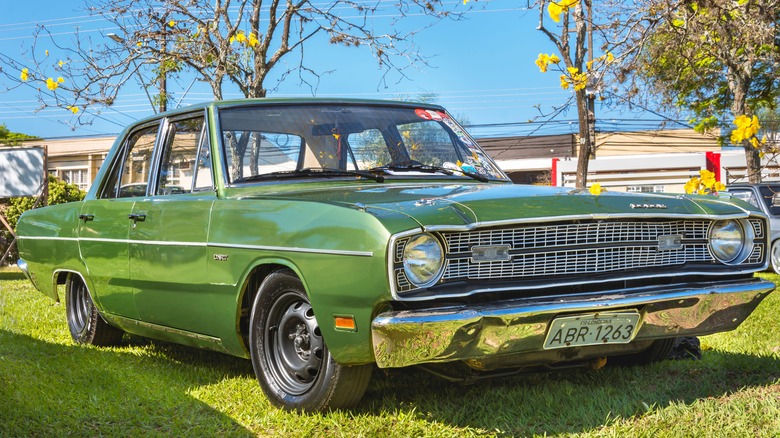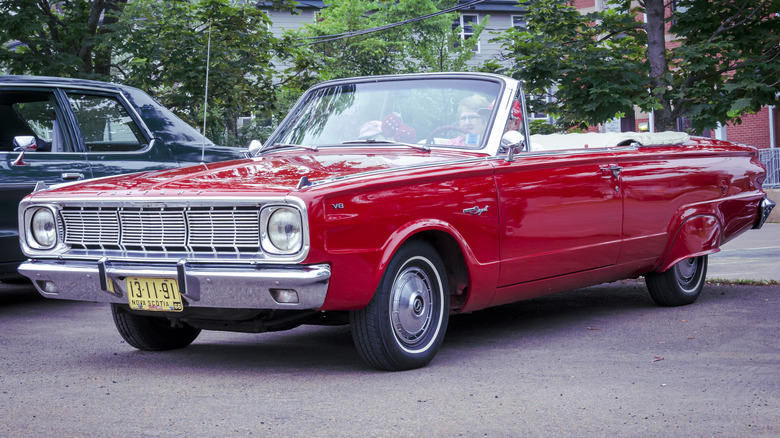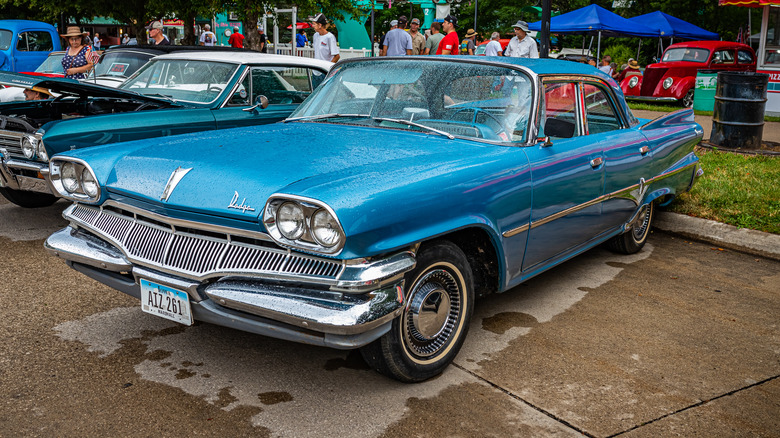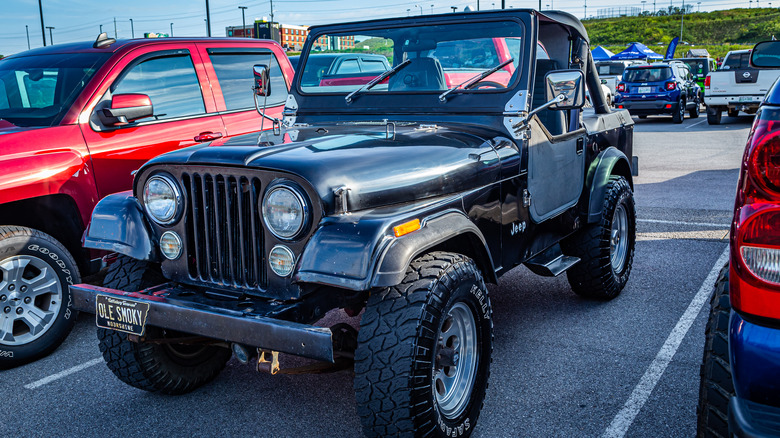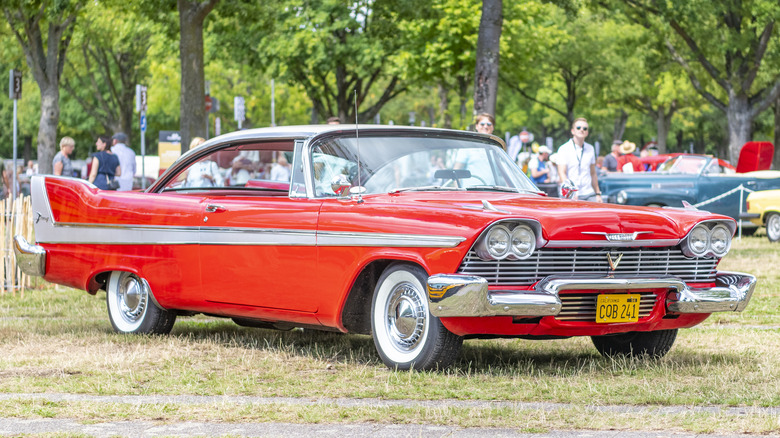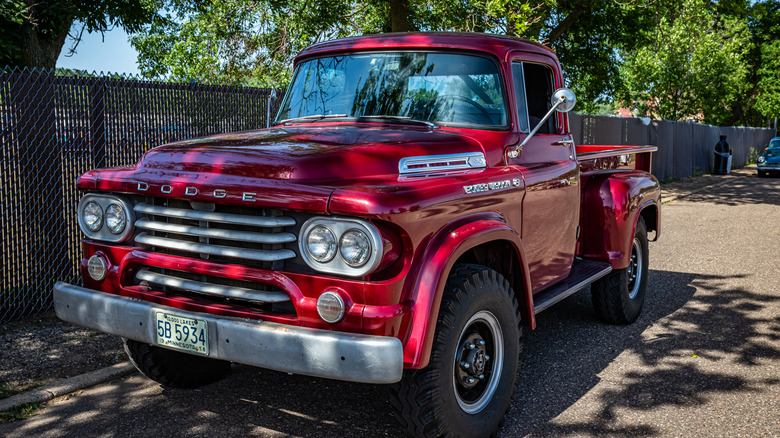5 Classic Mopars That Make Great Restoration Projects
Restoring a classic car is a project that can provide a substantial return on your investment, as well as an education in the basics of auto repair. The Mopar family of cars, trucks, and SUVs — which encompasses the Chrysler, Dodge, Jeep, Ram, and Fiat brands — includes a myriad of vehicles that make great restoration projects as financial investments, educational opportunities, or just plain old fun-to-drive experiences. The vehicles on this list can all be purchased for a few thousand dollars and have large communities of knowledgeable owners you can access through local clubs and online groups. They also all have huge parts marketplaces due to their high production numbers and are all relatively easy to work on.
The vehicles below also represent a wide cross-section, from classic muscle cars to rugged trucks and SUVs, so there's something here for everyone. With most of these classic Mopars, all you'll need to turn one from neglected junk to envy-inducing road warrior is a basic set of automotive tools, a factory service manual, a credit card for ordering parts, and a whole lot of free time.
Plymouth Valiant
The Plymouth Valiant hit showrooms in 1959, and according to Valiant.org, Plymouth dealers sold close to 150,000 Valiants in the first year. The new model was the first to get Chrysler's slant six engine, which was tilted 30 degrees in order to fit under the Valiant's hood. By the mid-1970s, the Valiant gave way to models like the Duster, Volare, and Scamp, and the last Valiant was produced in Australia as a 1981 model. Plymouth made over 700,000 Valiants between 1963 and 1966 alone, all of which came with one of three notoriously reliable engines: the 170 or 225 cubic-inch slant sixes, or the 273-inch V8.
Valiants can almost always be found at or below the $10,000 mark — even the stylish convertible models. Parts for Mopar's A-body cars like the Valiant are available from vendors like Classic Industries and Speedway Motors, and the Valiant's astronomical production numbers mean it's often easy to find one at your local salvage yard as well. They're also remarkably easy to work on: I owned a '64 Valiant convertible for nearly a decade, and in that time the only two jobs that took me more than a couple of hours to finish were a complete engine overhaul and a replacement of the top frame and canvas.
Dodge Dart
Another member of the Mopar family that makes a fine candidate for a restoration project is the Valiant's close cousin, the Dodge Dart. The compact A-body Dart was part of the Mopar family from 1963 through 1976, although the nameplate was previously used on a full-sized model from 1959 to 1961. The Dart got bigger and stronger as the '60s wore on, and by the '70s it became a full-fledged muscle machine, powered by V8s as big as 340 cubic inches. The Dart eventually morphed into the Swinger and Demon models, and the last Dart came off the line in Brazil in 1981.
Like the Valiant, the Dart enjoys a huge aftermarket, performance parts marketplace, and salvage yard presence. There's likely an A-body club somewhere close to you. As for online resources, Allpar Forums has more than 4,200 posts going back a dozen years and a community of thousands of members to help you with your Dart restoration project.
"Car Talk" host Tom Magliozzi was among the many thousands of proud Dart owners and spoke highly of his 1963 convertible often on the popular radio program. On the show's blog, his brother Ray once wrote, "The Dart starts immediately — every single time. It never fails. This is more than can be said for some newer cars."
Jeep CJ
For sheer fun factor, it's hard to top the Jeep CJ. The predecessor to the Wrangler has roots in the military Jeeps built for the Army during World War II by Willys-Overland. The first CJ, or civilian Jeep, model was the CJ-2A, which debuted in 1945. The CJ-5's production run from 1955 through 1983 is the longest of any Jeep model in history. There's also the longer CJ-7 (1976-86), the pickup-like CJ-8 Scrambler (1981-86), and the CJ-6 (1956-81) – a long wheelbase version of the CJ-5 with a second row of seats.
CJs enjoy an even larger aftermarket parts scene and support community than classic Mopar car models, with vendors like Quadratec, 4 Wheel Parts, and Rugged Ridge boasting huge Jeep catalogs. Online communities like Jeep Forum and Jeep Garage are also there to provide tech tips, institutional knowledge, and moral support. Project-condition Jeeps can be had for a few thousand dollars, but fully restored CJ-7s and CJ-8s can get up to the mid-to-high five figures. CJs are also pretty easy to work on, with large engine compartments, easy access to the undercarriage, and few electronic components.
Plymouth Fury
Fans of the 1983 John Carpenter horror film "Christine," an adaptation of Stephen King's novel of the same name, will be quite familiar with the Plymouth Fury. It's an apt name for a car capable of repairing itself that goes on a murderous rampage. The Fury was introduced at the 1956 Chicago Auto Show, and Plymouth went all-in with regards to performance. The Fury had a 303 cubic-inch V8 with a 9.25:1 compression ratio and a high-lift cam, a four-barrel carburetor, and free-flow dual exhaust. So configured, the Fury's engine put out 240 horsepower. The chassis was outfitted with powerful shocks and springs, 11-inch brakes, and a front anti-sway bar. Drivers were also treated to a three-speed manual transmission with a heavy-duty clutch.
For its second year, the Fury gained amenities like power steering, brakes, seats, and windows, air conditioning, and an automatic transmission. Under the hood, the engine grew from 303 to 318 cubic inches and gained a second four-barrel carb. These upgrades boosted the output to 290 horsepower and 325 pound-feet of torque.
Since your real-life Fury won't be able to repair itself, you'll be pleased to know that there's a Facebook Fury owner's group with almost 10,000 members and a wide selection of parts available from suppliers like Classic Industries and Collector's Auto Supply. Despite the model's cinematic fame, Furies are reasonably priced on the secondhand market, with 1960s models often changing hands for less than $10,000.
Dodge Power Wagon
If you have a boat to tow, frequent dump runs to make, or other tasks that require a pickup truck, a Dodge Power Wagon might be the best project vehicle for you. When the Power Wagon hit the market in 1946, it joined the Jeep CJ-2A as one of the only commercially available four-wheel drive vehicles available to consumers. Dodge marketed the truck as a successor to its World War II vehicles, and the company made more than 95,000 Power Wagons between 1946 and 1968.
The original Power Wagon was rated at 3/4 ton. Beginning in 1949, the truck was offered with optional farm implements like plows and rotary hoes. The truck evolved steadily over the next couple of decades, slowly gaining amenities like power steering and brakes and a more powerful engine. The Power Wagon badge was dropped in the early '80s when Dodge began labeling its trucks as Rams, but since 2005, the Power Wagon name has been used for certain Ram 2500 specialty packages.
It's not hard at all to find a '60s or '70s Power Wagon for under $10,000, and parts are easily found both online and at national chain stores. It's best to seek out a model made in 1955 or later, as that's when Dodge switched from a 6-volt electrical system to the modern 12-volt standard.
